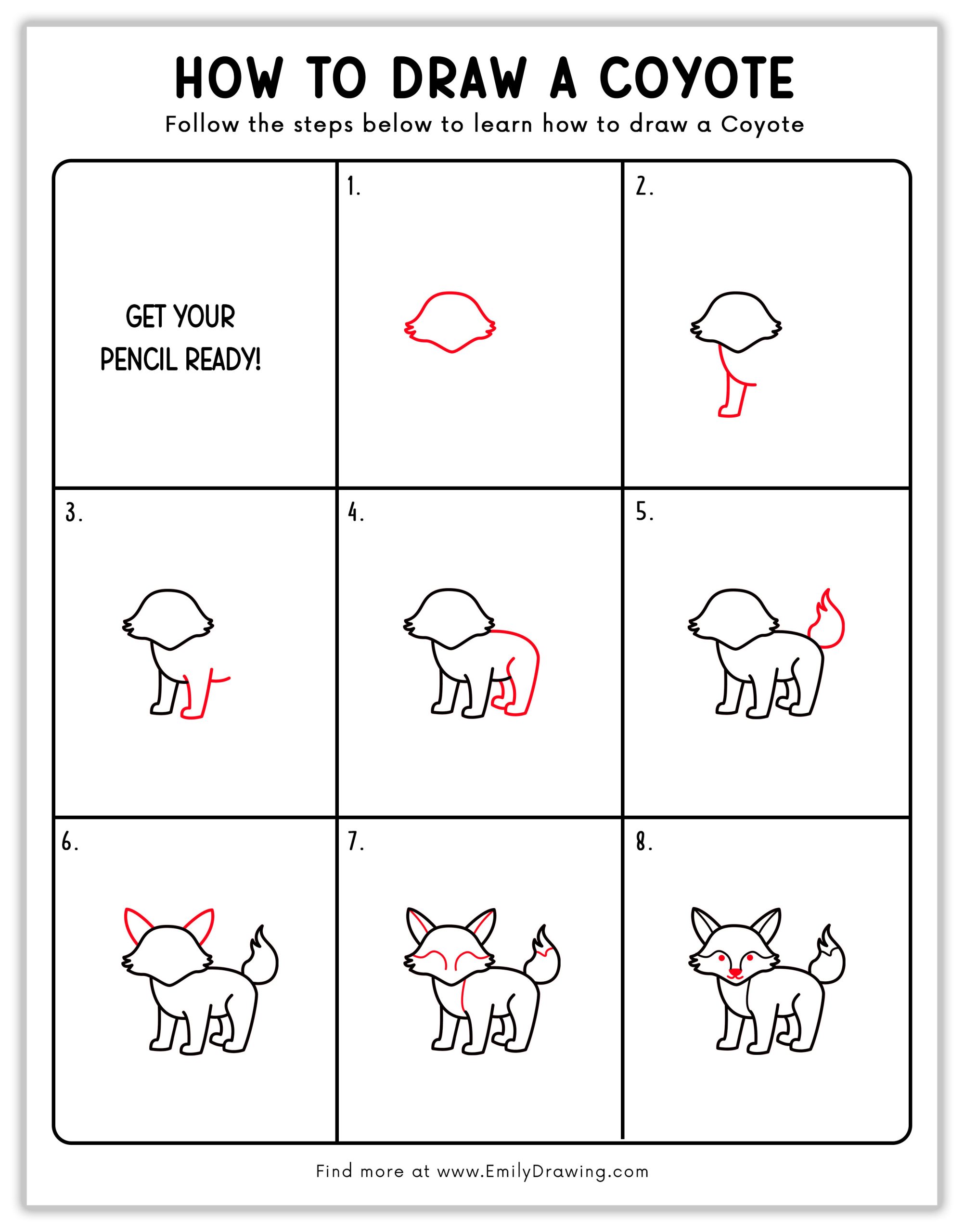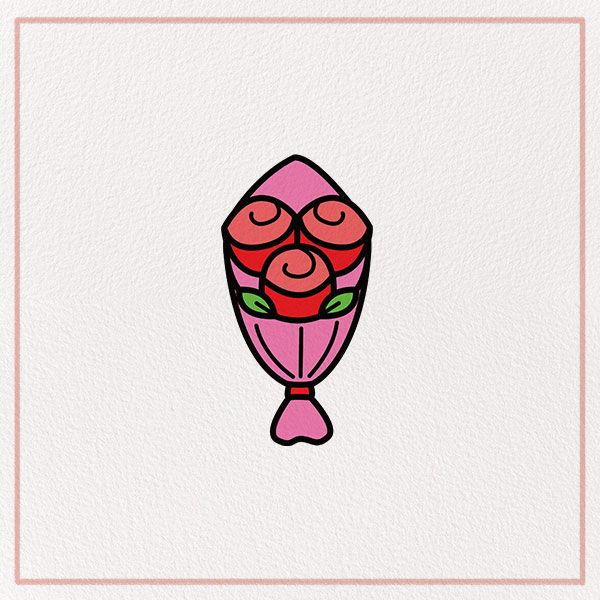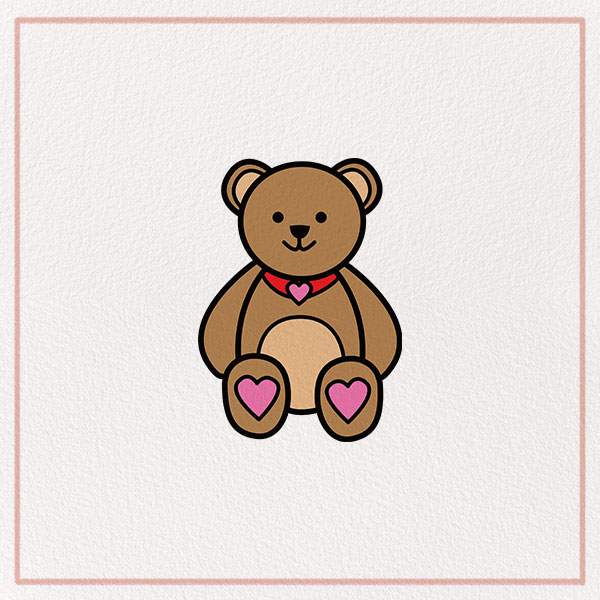Coyotes are clever and curious creatures often featured in desert animal art, howling under the moon. These wild canines are known for their intelligence, adaptability, and playful nature. If you love wildlife and enjoy drawing, you’re in for a treat! In this coyote drawing tutorial, we’ll learn how to draw a coyote in just a few easy steps. Grab your pencil, and let’s get started!
Did you know? Coyotes are found all across North America, from deserts to forests and even cities. They are incredibly smart animals that have learned to survive in different environments.
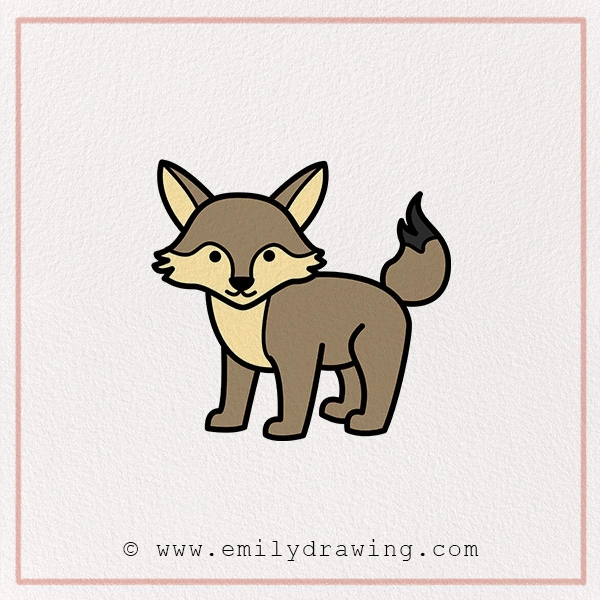
Materials:
- a piece of paper
- a pencil for the guiding lines and sketching
- an eraser
- a black sharpie or a pen for the outlines
- markers or colored pencils for coloring
- our printable drawing guide (Join my Email List below to get this Tutorial)
Here are my RECOMMENDED Art Supplies!
- Crayola Coloring Set (140 Pieces – Mega Value!)
- 24 Colored Crayon Set
- A4 Printer Paper
- Crayola Coloring Pencils
- HP Home Printer with Instant Ink!
Time needed:
15 minutes.
How to Draw a Coyote — Let’s get started!
Step 1 – Draw the Coyote’s Head
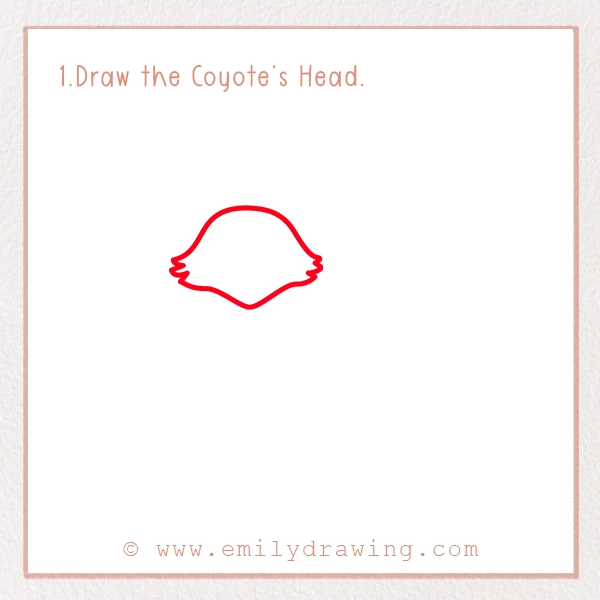
Start by sketching the basic shape of the coyote’s head. Draw a slightly rounded shape with small fur-like bumps on the sides. This will form the base of the face. Coyotes have somewhat triangular faces with a pointed snout, so try to shape the outline accordingly.
To make the head proportionate, imagine it fitting inside an oval. Use light strokes, so you can adjust the shape as needed. The snout should be slightly extended to give the coyote its signature look.
Tip: Don’t worry about making it perfect! A coyote’s fur is naturally a little rough, so slightly uneven lines can make your drawing look more realistic.
Step 2 – Sketch the Right Front Leg
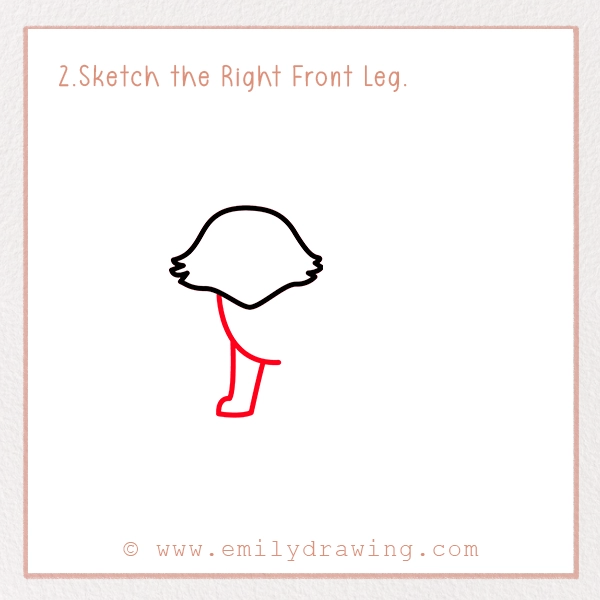
Next, add a slightly curved line downward to form the coyote’s right front leg. Draw a small foot at the bottom. Make sure the leg is not too thick or too thin.
Since the coyote’s body is lean and muscular, the legs should reflect that. The right front leg should be positioned in a way that suggests the coyote is standing or walking.
Fun Fact: Coyotes can run up to 40 miles per hour—almost as fast as a car on a city street! This speed helps them escape predators and catch prey quickly.
Tip: Keep the leg proportionate to the head. If it looks too long or too short, adjust accordingly.
Step 3 – Draw the Left Front Leg and the Belly
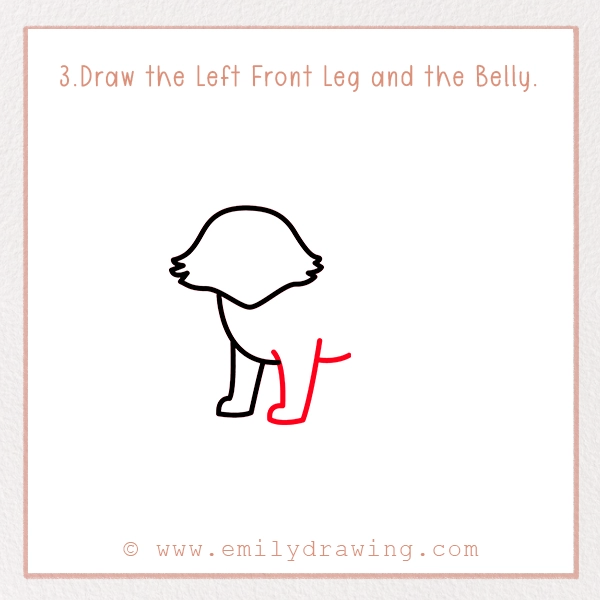
Now, sketch the second front leg slightly behind the first one and connect them by drawing the belly. The belly should have a slight curve to show the coyote’s lean body.
Since this leg is farther away, it should be slightly shorter to create perspective. The belly should be drawn using curved lines to indicate the animal’s natural shape.
Tip: Make sure the legs are balanced so your coyote stands firmly on the ground. If one leg looks uneven, try adjusting the lines slightly.
Step 4 – Draw the Body and Back Legs
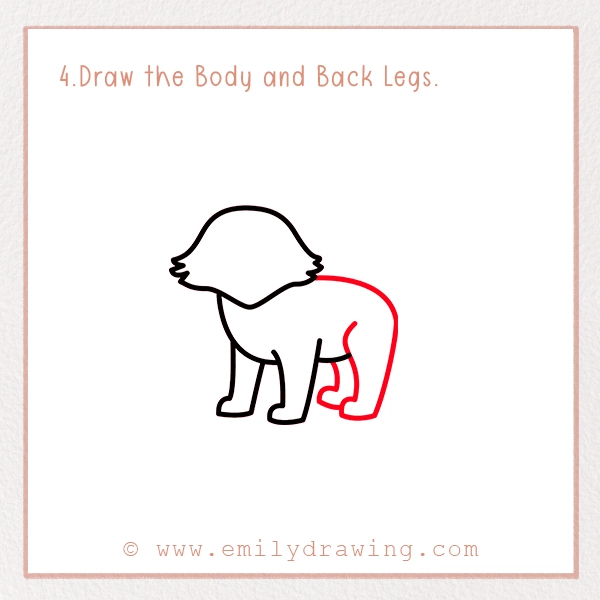
Extend a curved line from the back of the head to shape the coyote’s body. Then, add the back legs slightly bigger than the front ones. This helps give the drawing a sense of depth and perspective.
The coyote’s body should be sleek but strong. Since they are built for running and jumping, their legs should appear well-defined.
Tip: Coyotes have lean, muscular bodies, so don’t make the shape too wide! Keep the curves smooth to show their sleek form.
Fun Fact: Coyotes are excellent jumpers and can leap over fences as high as 6 feet!
Step 5 – Draw the Tail
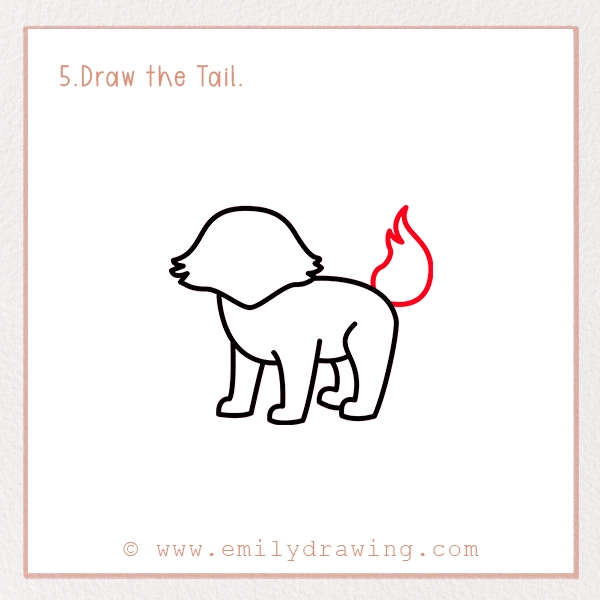
Draw a fluffy, curved tail at the back. Coyotes have thick, bushy tails with a dark tip. The tail should be slightly curved and appear fluffy.
Adding small fur strokes along the tail will give it texture and make it look more natural.
Fun Fact: Coyotes use their tails for balance while running and to communicate with other coyotes! When a coyote is alert, its tail may be raised slightly.
Tip: Use small, jagged strokes to create a furry texture rather than a single smooth line.
Step 6 – Draw the Ears
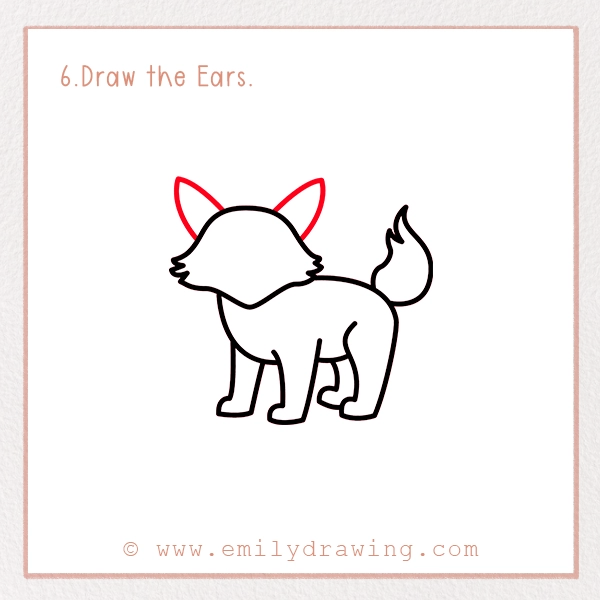
Coyotes have large, pointy ears that help them detect sounds from far away. Draw two tall triangles on top of the head. Try to make them symmetrical, but don’t stress if they are slightly different.
To make the ears more realistic, add an inner ear structure with a few small fur strokes.
Tip: Adding small inner details inside the ears will make them look more realistic!
Step 7 – Outline the Eyes and Nose, and Add Details to the Ears and Tail
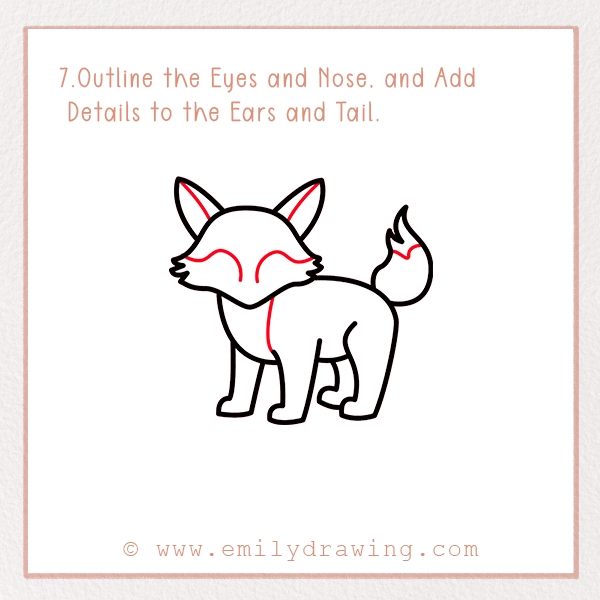
Now, bring your coyote to life! Add two round eyes, a small nose, and a curved mouth. Add fur details to the ears and some extra strokes to the tail to make it look fluffy.
For the eyes, make them slightly almond-shaped with a small highlight to give them life.
Tip: Make the eyes slightly oval and add a tiny white dot inside each one to give your cartoon coyote drawing a shiny, lively look.
Fun Fact: Coyotes have excellent night vision, which helps them hunt in the dark!
Step 8 – Add Details to the Face
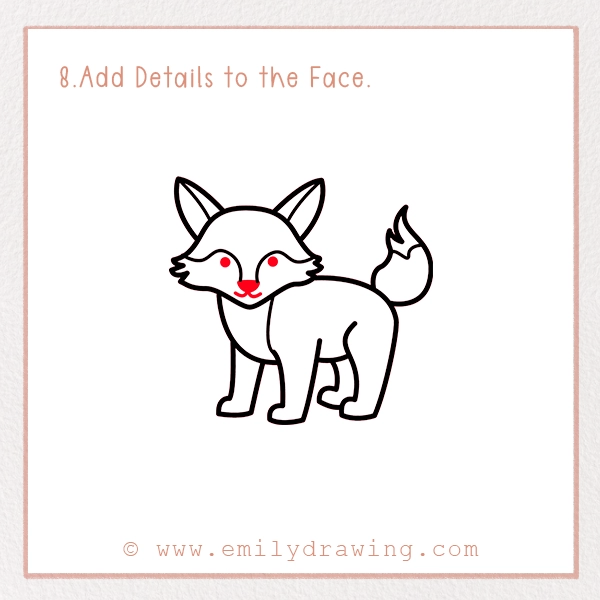
Now, refine the facial features by adding small details to the cheeks, nose, and around the eyes. Little lines on the face will make your coyote look more lifelike.
Draw tiny fur strokes around the face and cheeks to make it appear fluffy. You can also add slight shadows to give depth to the nose and mouth area.
Tip: Small fur lines around the face will make your coyote look more realistic! You can also add tiny whiskers for extra detail.
Step 9 – Color Your Drawing!

Now comes the fun part—coloring! Coyotes have brownish-grey fur with cream-colored bellies and dark-tipped tails, much like wolves—see our guide on how to draw a wolf for another wild canine illustration. Use shades of brown, tan, and grey to give your coyote a natural look. You can also add shading to give it a more three-dimensional effect.
For a more dramatic effect, blend lighter and darker shades to create depth in the fur.
Tip: Blend colors lightly with a colored pencil or use a soft shading technique to make the fur look more realistic.
Pin it now, Draw later!
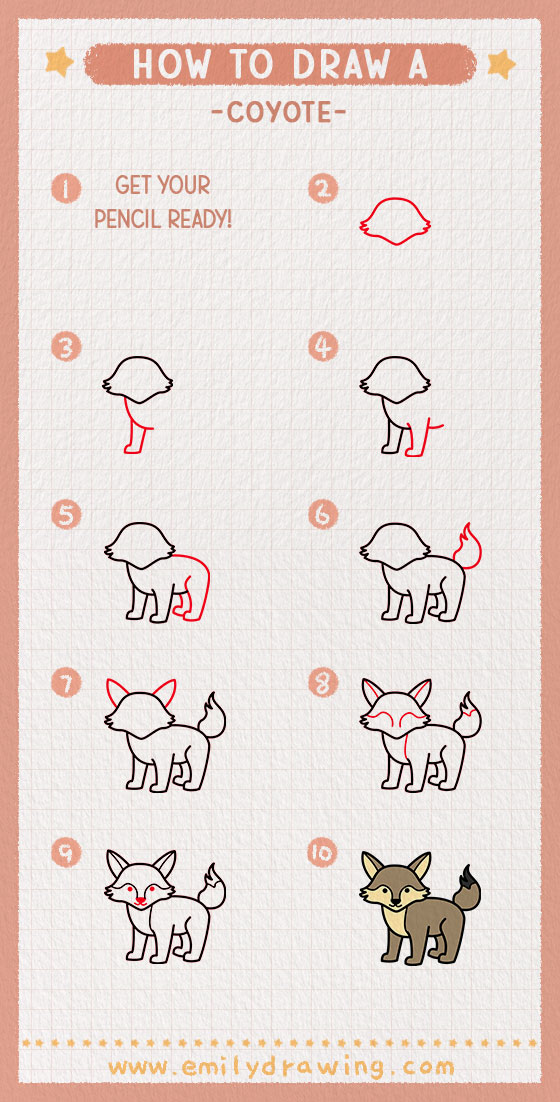
Fun Facts About Coyotes
- Coyotes are great singers! They howl to communicate with their pack and to mark their territory.
- They can live in forests, deserts, and even cities! Some coyotes have adapted to urban life and are found in large cities like Los Angeles and Chicago.
- Coyotes are super smart and can solve problems to find food. They have even been seen working together to catch prey!
Tips and Tricks for Better Drawing
- Use light pencil strokes first so you can erase mistakes easily.
- Make the fur look more natural by using short, quick lines instead of smooth strokes.
- Try drawing your coyote in different poses—maybe howling at the moon or running through the forest!
- Use references—looking at real coyote pictures can help you understand their anatomy and details.
- Practice shading to give depth and dimension to your drawing. Shadows under the body and on the fur can make the coyote look more realistic.
We hope you had fun learning how to draw a coyote! Remember, the more you practice, the better you will get. Keep sketching, experimenting with colors, and trying out different poses.
If you enjoyed this tutorial, share your drawing with friends or post it online using #EmilyDrawing. We’d love to see your amazing artwork!
